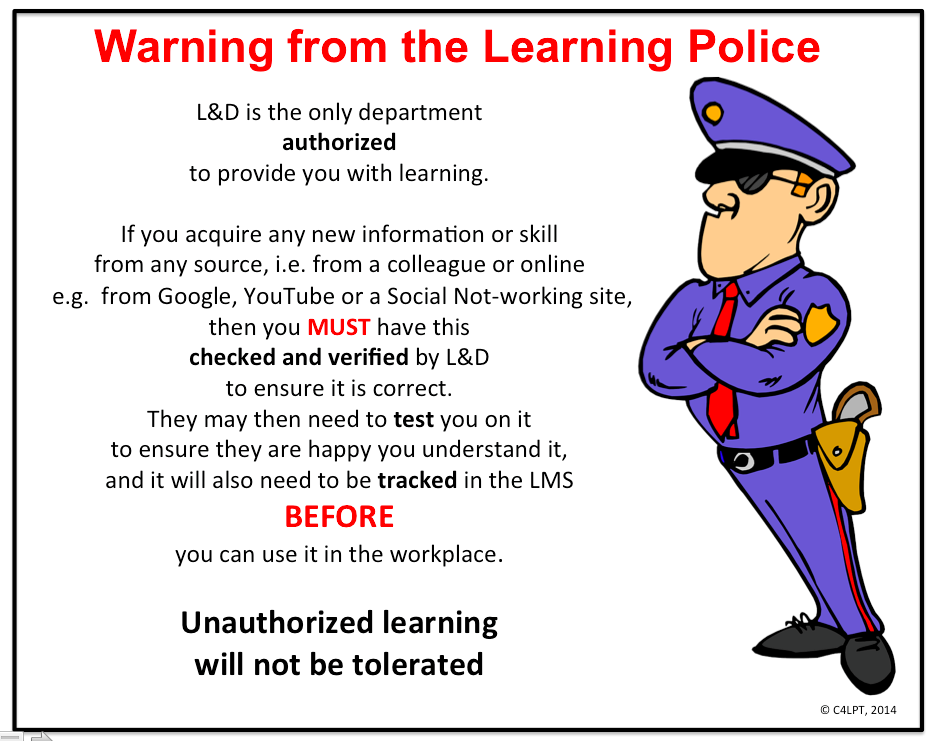Modern Workplace Learning means L&D establishing a new relationship with both managers and individuals.
(1) With managers
 L&D needs to move away from being a “course order taker” – simply taking instructions for training or courses from managers. This situation has arisen since managers tend to see solutions to work problems as courses, but courses are often not the best solution, as Ron Carucci points out in When companies should invest in training their employees — and when they shouldn’t.
L&D needs to move away from being a “course order taker” – simply taking instructions for training or courses from managers. This situation has arisen since managers tend to see solutions to work problems as courses, but courses are often not the best solution, as Ron Carucci points out in When companies should invest in training their employees — and when they shouldn’t.
“Training is useful at times but often fails, especially when it is used to address problems that it can’t actually solve … Many well-intended leaders view training as a panacea to obvious learning opportunities or behavioral problems.”
 Training has to be a valid and appropriate response to a need. So if L&D continues to act as “course order takers”, nothing will change.
Training has to be a valid and appropriate response to a need. So if L&D continues to act as “course order takers”, nothing will change.
L&D therefore need to work with managers as a consultant, partner or advisor.
The key to continuous learning lies with managers, so this will involve helping managers adopt a new management style that is not focused on simply directing people to do their job and making sure they do it, but growing and developing their team.
(2) With individuals
L&D needs to move away from being the “learning gatekeeper” where they control access to all learning in the workplace, and from the “learning police” where they enforce the process, as this tongue-in-cheek graphic highlights!

L&D professionals need to become Modern Learning Practitioners, where their role involves fostering self-sufficient modern workers who are not reliant on being spoon-fed everything they need to do their job, but enabling and supporting their learning in all its ways – at, for or through work.
⇒ What does Modern Workplace Learning mean in practice?
Last updated: February 25, 2020 at 12:52 pm